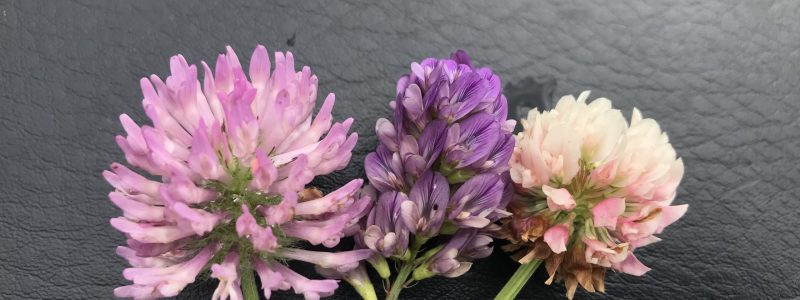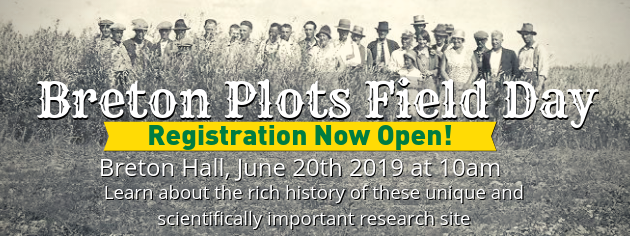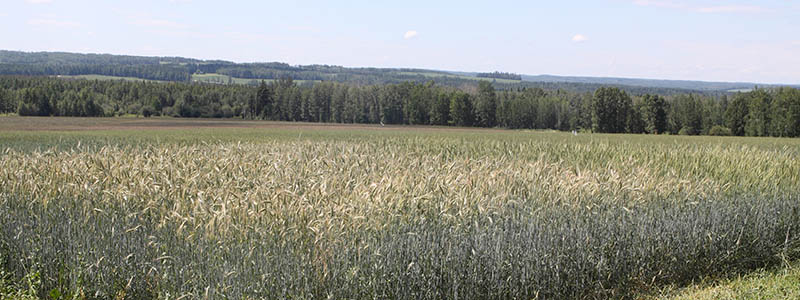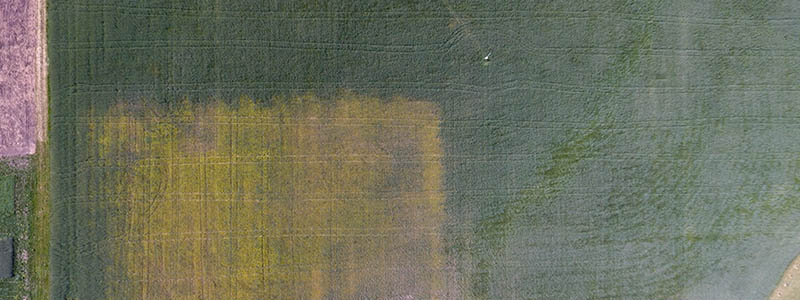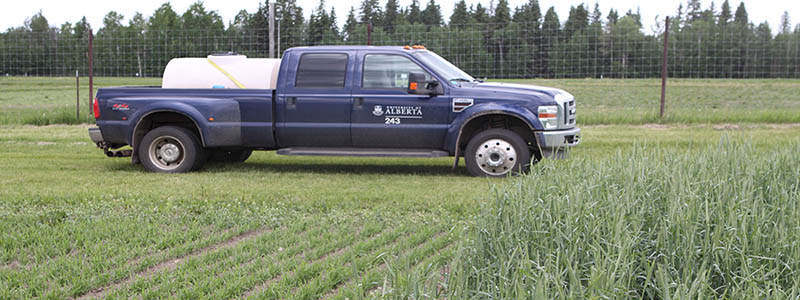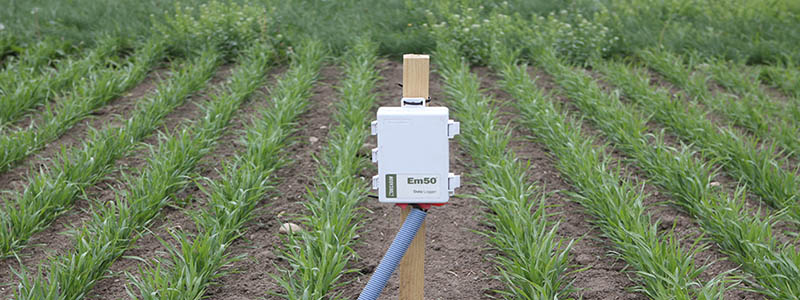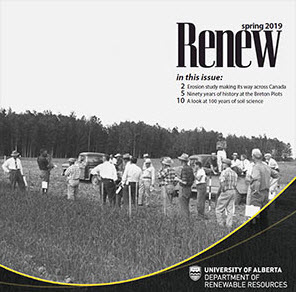The Breton Plots
Celebrating Over 90 Years of Research and Outreach on the Classical Plots (1929-present)
The Breton Plots research facility consists of two research areas; The Classical Plot, and the Hendrigan Plots. As the area around present-day Breton, Alberta was settled (between 1910 - 1920), agricultural settlement occurred in the prairie or parkland belts where Chernozemic soils and Brown and Black Solonetzic soils dominated. The Breton Plots unit was established in 1929 near the village of Breton, 100 km southwest of Edmonton, by the Department of Soils, University of Alberta. The Hendrigan Plot unit was established in 1980.
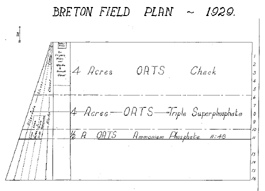
The Breton Plots are known worldwide in the Soil Science community and recognized as one of only a few long-term soil study projects in the world.
Breton Plots Field Day June 20, 2019
On June 20th, 2019, we celebrated the 90th year of Soil Science research conducted at the University of Alberta Breton Plots - a historic and unique site.
The Breton Plots are a focal point for research and discovery, CONTINUING to provide science and best practices on soil health, higher yields, greenhouse gas emissions, nitrogen fertilizers, nutrient balances, crop rotation, and carbon sequestration.
Program and details are available here.
Renew spring 2019 edition
Classical Plot
The Classical Plots were the first research plots at the facility, established in 1929. These plots were designed to find a “system of farming suitable for the wooded soil belt.” The “Gray-Wooded” soils are now known as Gray Luvisolic soils and occur in the northern interior plains of Manitoba, Saskatchewan, and Alberta. The largest area occurs in Alberta (20 million hectares), of which 5.7 million hectares are potentially arable. Today, the Breton Plots are a model of how diverse cropping practices affect typical Gray Luvisolic soils.
Hendrigan Plots
The Hendrigan Plots were named for Lou Hendrigan, a local farmer who believed the best agricultural system for the Gray soils was a continuous forage system, grown to feed cattle on a mixed farm. He thought the best forage for the area was a mixture of fescue grass, which is suited to the soil and climate, and a legume such as White Dutch Clover. The purpose of the clover is to fix nitrogen from the atmosphere and supply it to the soil, and the grass adds organic matter, especially because of its large root systems.

